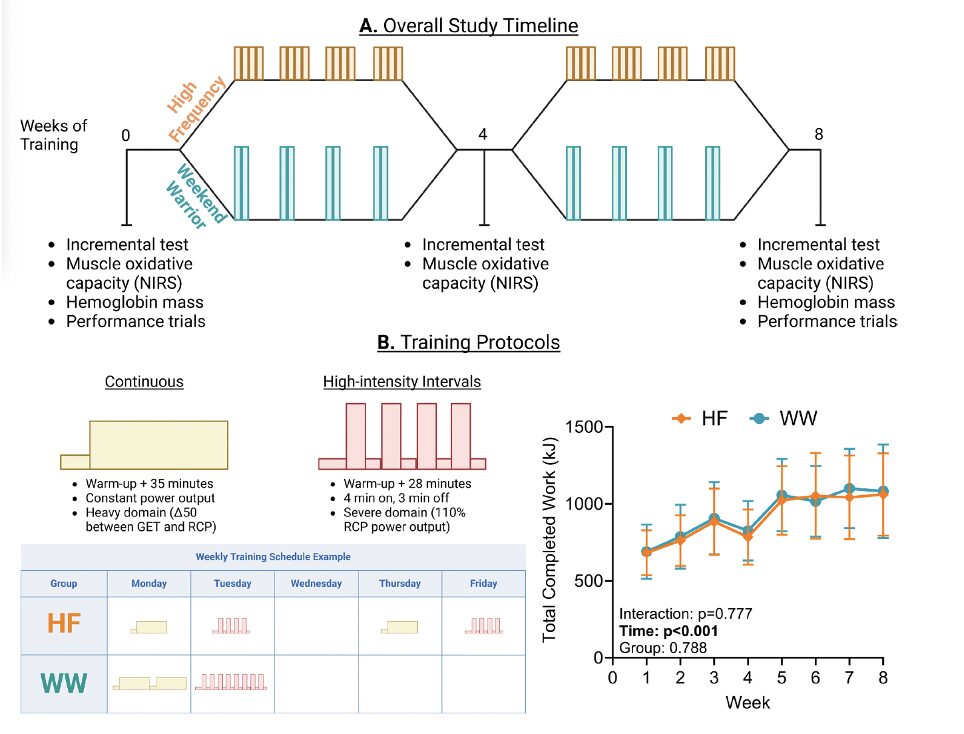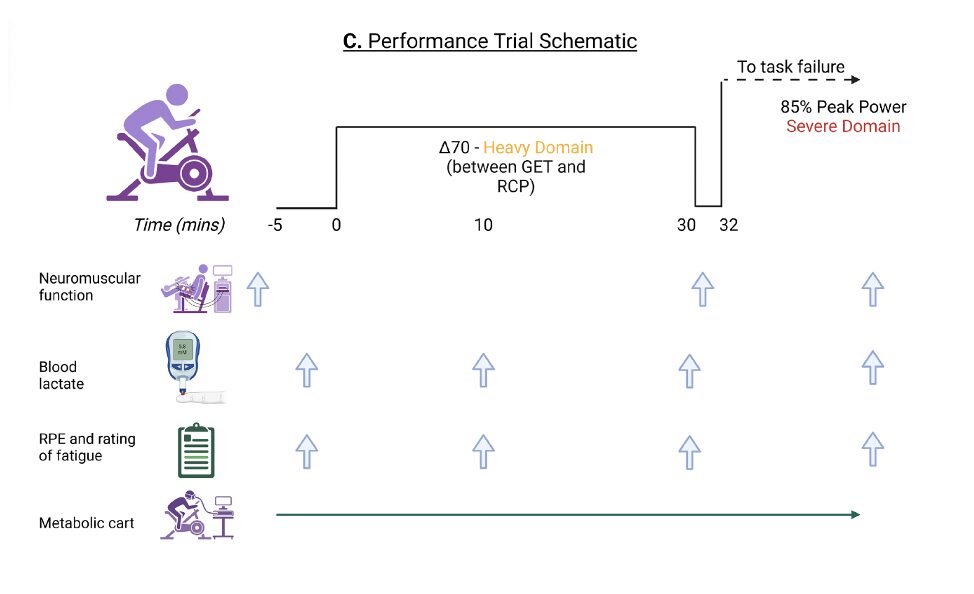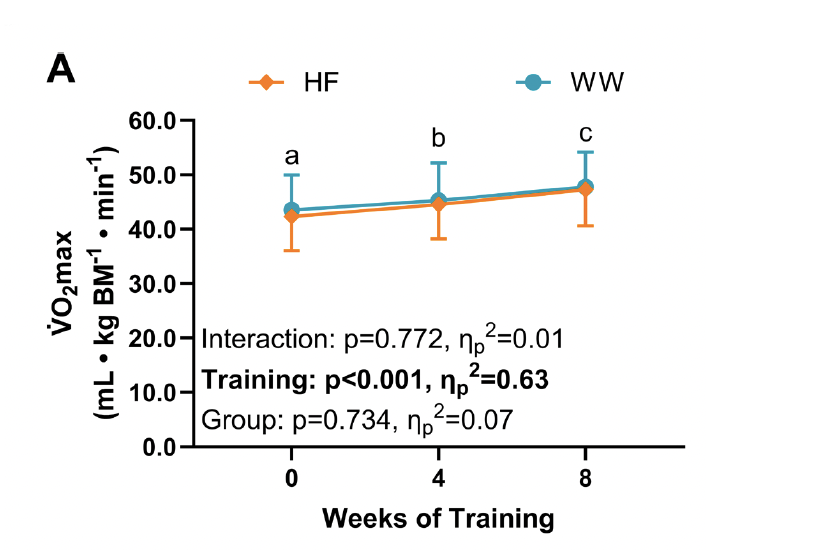It’s ok to train less frequently for cardio!

I still remember the first time I ran a half marathon.
We lived in a tiny apartment at Yonge and Eglinton, my wife was pregnant with our first child, and we both just started working full time.
I was rehabbing a running coach who helped me with my training as the furthest I had ever run in my life at that point was the annual 5km race at the Chiropractic College (typically hung over with the rest of my classmates).
My run coach used Garmin and Training Peaks so I could see what was in store week by week. To my surprise it wasn’t long before I was running 4 or 5 times a week with varying duration and intensity.
I never missed a run and loved the training as much (or more) than the actual race.
Fast forward 11 years and the thought of staying consistent with an exact plan of 4-5 runs weekly is laughable.
Three busy kids, and coaching multiple sports while working full time makes for an ‘interesting’ schedule.
I often wonder now if I tried to run another half marathon, if I could improve as much as I did the first time with a more focused run routine. Realistically I’m not willing to give up weights a few times a week so my runs would likely be just 2-3 times weekly. I wonder if putting in the same duration but split over just a couple of runs would have a similar effect on my cardiorespiratory fitness as running 4-5 times a week did 11 years ago.
Lucky for me Dr. Martin Gibala, who we are having for our second speaker event in February (you can sign up here…..it’s going to be awesome) published a brand new paper this month that answered this question directly.
This was one of the best done papers I have read in a long time. Typically while reading a paper I try and poke holes in the methods, or take a very critical view on the conclusions the authors try and draw.
But this particular paper was darn near perfect.
Specifically they looked at whether low frequency training (twice weekly) is inferior to high frequency training (4 times weekly) for improving cardiorespiratory fitness.
The researchers noted a paper that we previously did a blog on regarding weekend warriors, where working out just once or twice weekly had a significant decline in all cause mortality. Based upon this, they hypothesized that training just twice weekly (but for longer duration) would have the same positive effects as higher frequency training with shorter duration.
They recruited 30 healthy people aged 18-45 that were not ‘endurance trained’ which they defined as training over 4 times per week or over three hours total per week.
The study participants were then randomly allocated to one of two 8 week training protocols. Both groups completed their training on cycle ergometers as this is very easy to standardize. They even used the same temperature controlled room with researcher supervision.
They completed comprehensive testing before and after the 8 weeks of training, as well as a couple of tests at the midpoint.
They tested darn near everything of importance, from ‘typical’ tests like height, body mass, muscle oxidative capacity, to measuring hemoglobin mass, and a DEXA scan. They also did ‘performance testing’ including VO2Max testing, a neuromuscular function assessment and others.
Here is a pictorial representation of the 2 groups for training as well as the various ‘performance measures the researchers used.


Both groups were matched for total relative exercise intensity and total duration so the training volumes were equal. Again, the difference was the ‘weekend warrior’ cardio group did 2 long sessions and the high frequency group did 4 shorter sessions.
As the trial progressed they even had the athletes increase duration gradually as well as intensity. What a study!
I want to share one last part of their methods that I loved and shows the detail this research group went into. They included certain controls to try and standardize their testing as best as possible. An example? They had the participants record their diet for 24 hours prior to their testing at baseline, then at their post training trials 8 weeks later, they had them replicate their diets from the 24 hours prior to their initial testing to ensure nutrition wasn’t a major confounding factor!
The major outcome the researchers were looking at was the change in VO2max over the duration of the 8 week trial. This is considered a direct representation of a person’s cardiorespiratory fitness so if one group improved significantly compared to the other, then this is likely the preferred training method.
As you can see in the chart below, both groups had a big improvement over the 8 weeks and interestingly there was no significant difference between groups. For those interested, based on their statistical analysis there had to be a 3.5mL/kg/min or 1 MET to be considered a significant difference. In this trial, the difference between groups was a measly 0.6mL/kg/min.

Some other pertinent results from testing included:
- Both groups had a significant difference in body fat percentage irrespective of which group they were assigned to.
- There was no difference between groups for power outputs or exercise threshold improvement.
- There was no difference between the two groups in absolute and relative hematological parameters including hemoglobin mass, blood volume, and plasma volume. All of these increased in both groups.
- There was also no difference in oxidative capacity between groups.
- Performance measures were largely the same between groups where both had similar improvements in VO2max, heart rate, and energy expenditure during heavy exercise.
- Both groups also had a similar change in the percentage of energy from each substrate whereby there was an increase in the percentage of energy from fat in both groups following training. Blood lactate concentration after 30 minutes of heavy exercise also decreased similarly.
Wow.
Talk about a provocative paper!
Essentially this is saying that exercise frequency is NOT an important determinant of improvements in cardiorespiratory fitness provided the total volume during the week is the same.
Both training methods had huge improvements physiologically as well as in their own perceived stress during high intensity exercise.
Both groups improved oxygen delivery and utilization. In fact each group improved their VO2max by about 10% over the 8 weeks. That’s huge!
So overall you can train twice weekly or four times weekly provided you get your total training time in. Both ways will improve your physiological effects on endurance across all types of training – both slow zone 2 and high intensity interval training.
As an added benefit, both protocols helped decrease reliance on carbohydrate oxidation to improve your neuromuscular function.
The only downside of this article?
Now I can’t use lack of time as an excuse to train for a race of some sort!
